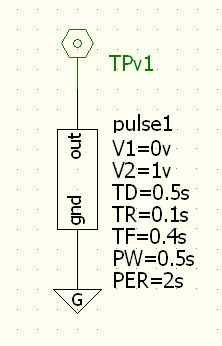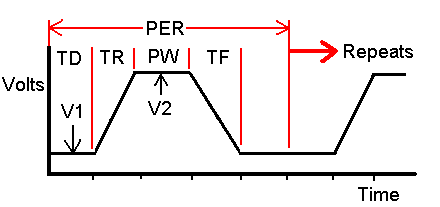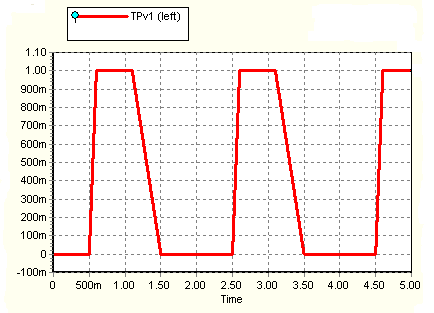The Pulse Voltage Source:
What is it?
This component is used to define a voltage pulse that repeats at a specified time interval.
It is similar to the PieceWise Linear (PWL) voltage source. However, a PWL would require
the entry of too many voltage versus time points to make a repeating pulse.
What is it good for?
To model the payment of income taxes, you could use a Pulse Voltage Source
to generate the payment each year.
A Pulse Voltage Source could be used to make a monthly annuity payment to
your savings account.

Tell me more!
At the left is shown an example of a PULSE Voltage Source.
The seven parameters that define the voltage versus time relation are:
V1, V2, TD, TR, TF, PW and PER
V1 is the initial starting voltage.
V2 is the pulsed voltage.
TD is the delay time before the start of the pulse.
TR is the transition time of the leading pulse edge.
TF is the transition time of the trailing pulse edge.
PW is the width of the pulse.
PER is the repeat time for the pulse.
These parameters are shown below:

SPICE Description Format for the Pulse Voltage Source:
The general spice format is:
Vpulse1 +voltage -voltage PULSE(V1 V2 TD TR TF PW PER)
An example is:
Vpulse out gnd PULSE(0v 1v 0.5s 0.1s 0.4s 0.5s 2s)
The simulation of this example is:

Back to the components page

